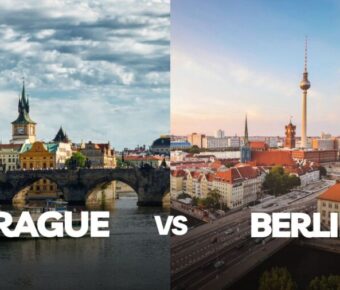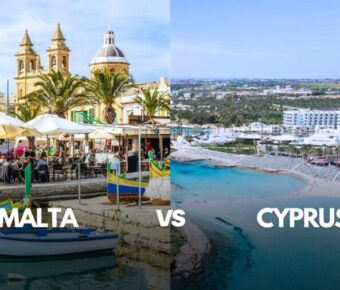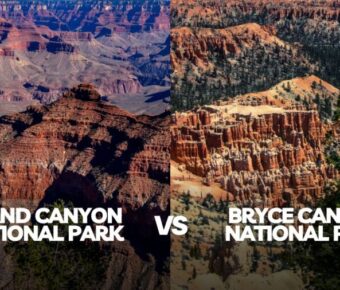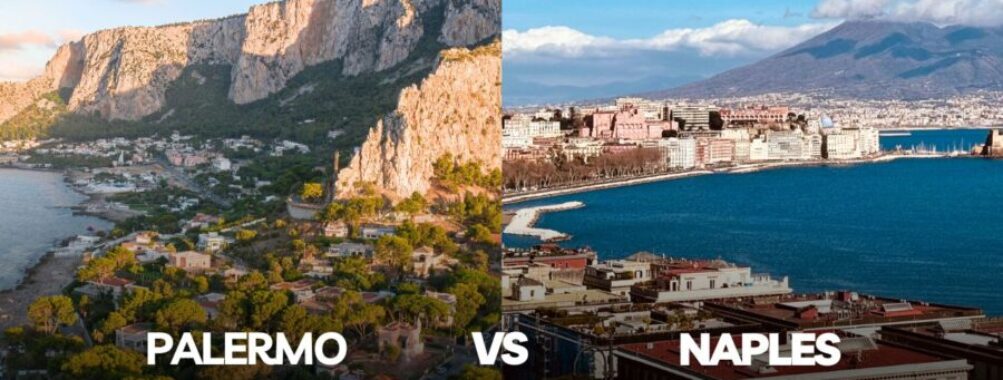
Palermo vs Naples: Which Italian City Offers the Best Hidden Gems and Local Experiences in 2025
Naples and Palermo are two of Italy’s most captivating cities, each with distinct charm and character. Palermo offers a more relaxed, grand atmosphere with elegant boulevards and multicultural influences, while Naples delivers raw energy, world-class museums, and easy access to famous archaeological sites like Pompeii.
These historic cities showcase different sides of Italian life. Naples buzzes with constant motion, serving up the best pizza in the world amid its narrow streets and ancient quarters. Palermo shines with Norman churches, bustling markets, and a blend of Arab, Norman, and Spanish architectural styles that tell the story of Sicily’s rich past.
A vacation in either city promises unforgettable cultural experiences. The choice comes down to personal style – pick Naples for its archaeological treasures and urban energy, or choose Palermo for its cosmopolitan grace and Mediterranean warmth.
Table of Contents
- Historical Context
- Palermo’s Rich Past
- Naples Through the Ages
- Architectural Marvels
- Palermo’s Architectural Heritage
- Naples’ Architectural Legacy
- Culinary Exploration
- Palermo’s Food Scene
- Naples’ Cuisine Delights
- Leisure and Attractions
- Palermo’s Cultural Sites
- Naples’ Enticing Activities
- Shopping and Markets
- Shopping in Palermo
- Naples’ Retail Experience
- Cost and Budget Tips
- Affordable Palermo
- Naples on a Budget
- Festivals and Events
- Palermo’s Vibrant Festivities
- Naples’ Annual Celebrations
- Frequently Asked Questions
- What are the notable differences between visiting Palermo and Naples?
- How do travel experiences contrast between Palermo and the Amalfi Coast?
- Can you highlight the unique cultural aspects of Palermo compared to other Italian cities?
- What transportation options are available for traveling from Palermo to Naples?
- What factors should tourists consider when choosing between Naples and Palermo?
- Are there any hidden gems in Palermo that can make the trip especially memorable?
- Book Your Dream Experience
- More Travel Guides
Historical Context

Palermo and Naples possess fascinating histories spanning thousands of years, marked by conquests, cultural shifts, and architectural marvels that shape their unique identities today.
Palermo’s Rich Past
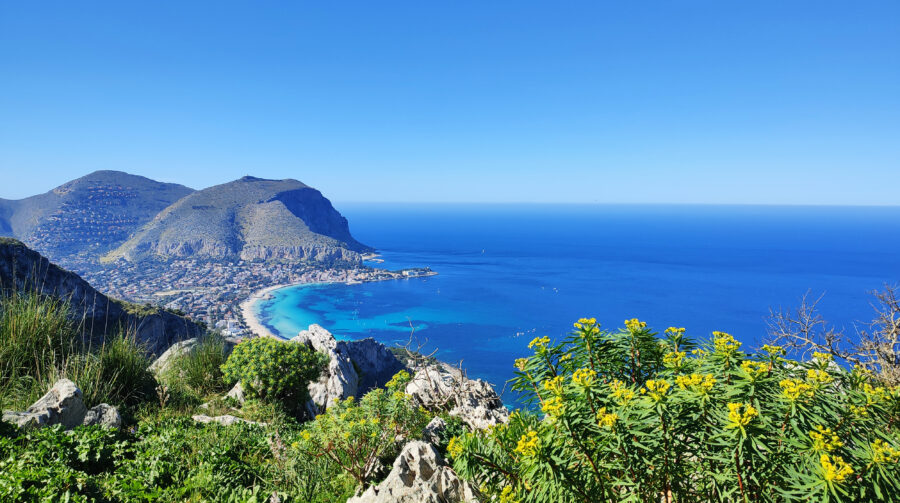
The capital of Sicily changed hands many times over the centuries. The Phoenicians founded it in 734 BCE before the Greeks, Romans, Arabs, and Normans left their mark on the city. The Norman period brought stunning architecture like the Norman Palace and the glittering Cappella Palatina with its amazing gold mosaics.
Arab influences mixed with European styles created Palermo’s special character. You can spot this blend in the markets, which feel like Middle Eastern bazaars, and the churches, which combine Norman, Byzantine, and Islamic designs.
Streets filled with baroque buildings tell stories of Spanish rule. The Quattro Canti crossroads shows off elaborate statues and fountains from the 1600s.
Naples Through the Ages

Greeks established Naples around 600 BCE as Neapolis, meaning “new city.” The Romans turned it into a cultural center where wealthy citizens built grand villas.
Castel Nuovo symbolizes Naples’ medieval power. Built in 1279, it housed kings who ruled southern Italy. The Spanish took control in the 1500s and left their mark on the city’s architecture.
Mount Vesuvius dramatically shaped Naples’ story. The volcano’s eruption in 79 CE buried nearby Pompeii and Herculaneum, creating time capsules of Roman life that draw visitors today.
The spooky Catacombs of San Gennaro date to the 2nd century. These underground tunnels hold ancient Christian art and thousands of tombs.
See Related: Rome vs Naples: Key Differences That Will Surprise Seasoned Travelers
Architectural Marvels
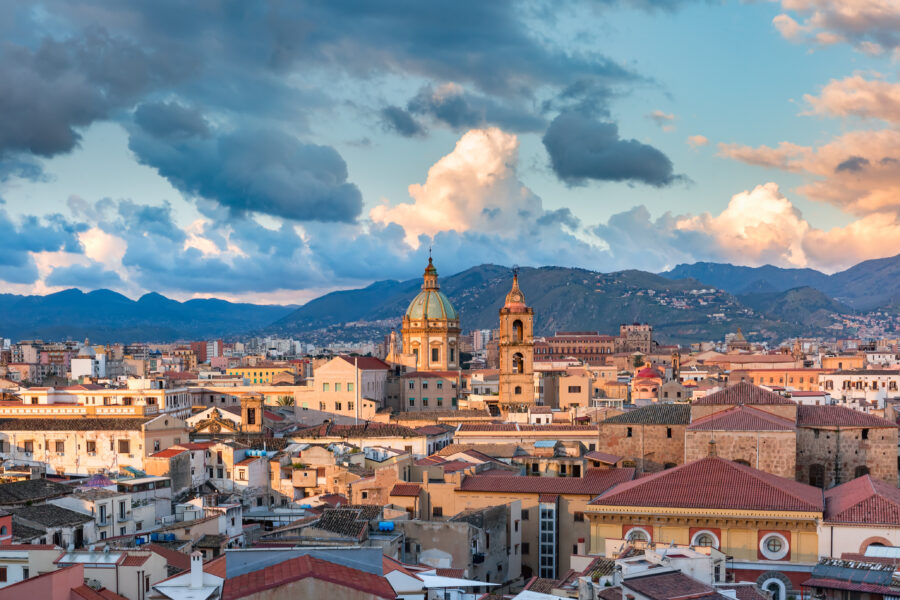
Palermo and Naples showcase magnificent buildings spanning centuries, from ancient Roman structures to ornate baroque churches and royal palaces. The architecture tells stories of past rulers, cultural influences, and artistic movements that shaped these historic cities.
Palermo’s Architectural Heritage
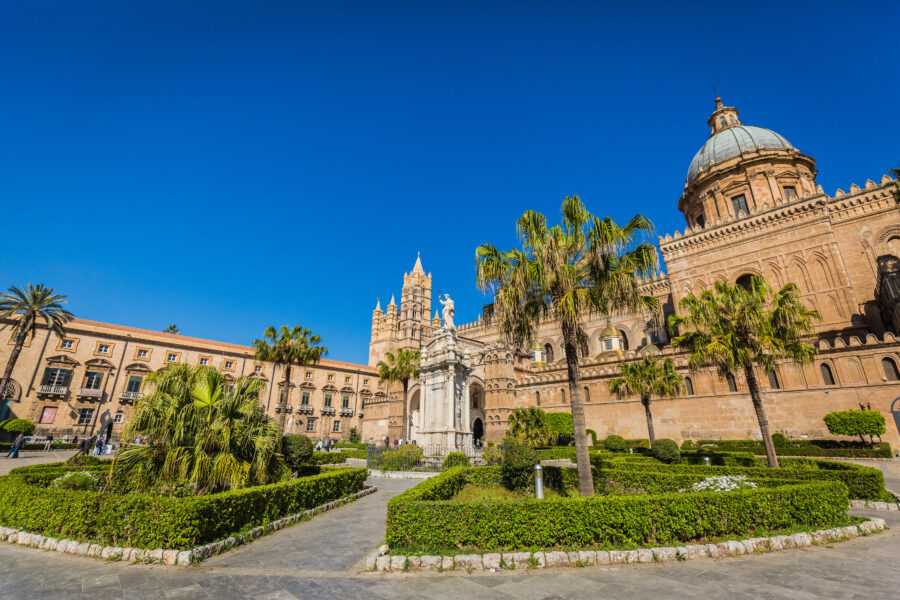
The Norman Palace is the crown jewel of Palermo’s architecture. Built in the 9th century, it mixes Arab, Norman, and Byzantine styles with striking stone walls and towers.
Inside the palace, the Cappella Palatina dazzles visitors with its golden mosaics and painted wooden ceiling. Arab craftsmen created intricate patterns that blend with Christian art in this royal chapel.
The city’s churches showcase a unique Arab-Norman style. The Cathedral combines Norman, Gothic, and Baroque elements from different periods. Its massive dome and towers make it easy to spot in Palermo’s skyline.
Naples’ Architectural Legacy

The Castel Nuovo dominates Naples’ waterfront with its five round towers and white marble arch. Built in 1279, this medieval castle was a royal residence and military fortress.
Piazza del Plebiscito forms the heart of Naples’ historic center. The massive semicircular colonnade leads to the San Francesco di Paola church, built to look like Rome’s Pantheon.
Naples underground tells another story, with Greek-Roman aqueducts and tunnels carved into volcanic rock. These ancient engineering works still amaze visitors today.
The Royal Palace’s red facade and statues of Naples’ past rulers showcase its baroque grandeur. Its grand staircase and royal apartments give a glimpse of royal life in the 1700s.
Culinary Exploration
Naples and Palermo offer incredible food experiences that showcase the best Italian cuisine. Each has distinct specialties and cooking traditions that reflect their unique histories and local ingredients.
Palermo’s Food Scene

Palermo’s streets buzz with food markets like Ballarò and Vucciria, where vendors sell fresh seafood, local produce, and Sicilian specialties. The city’s signature street food includes arancini—crispy rice balls stuffed with meat, cheese, or seafood.
The Arab influence shines through in dishes like pasta con le sarde, which combines pasta with sardines, wild fennel, and pine nuts. Sweet treats are a highlight, too—cannoli filled with fresh ricotta and cassata decorated with candied fruit.
Many family-run trattorias serve pasta alla Norma, a classic dish with eggplant, tomatoes, and salted ricotta. The city’s restaurants often feature fresh catches like swordfish, tuna, and sea bass prepared simply with local olive oil and herbs.
Naples’ Cuisine Delights

Naples gave birth to pizza, and the authentic Neapolitan version remains unmatched. The classic Margherita features San Marzano tomatoes, buffalo mozzarella, and basil on a charred crust.
Street food here means grabbing a cuoppo – paper cones filled with fried goodies like arancini and crocché. Local pasta specialties include ziti alla genovese with slow-cooked onion sauce and pasta al ragù.
Seafood plays a big role in Neapolitan cooking. Try impepata di cozze, peppered mussels in a white wine sauce. For dessert, don’t miss sfogliatella, flaky pastries filled with sweet ricotta cream.
Cozy family restaurants in the Spanish Quarter serve time-honored recipes passed down through generations. The coffee culture is legendary – stopping for an espresso is a daily ritual.
See Related: Eat Like a Local: Cities with the Most Mouthwatering Street Food in the World
Leisure and Attractions

Naples and Palermo offer unique cultural experiences and activities showcasing their rich histories. Each city maintains distinct attractions that reflect its character and charm.
Palermo’s Cultural Sites
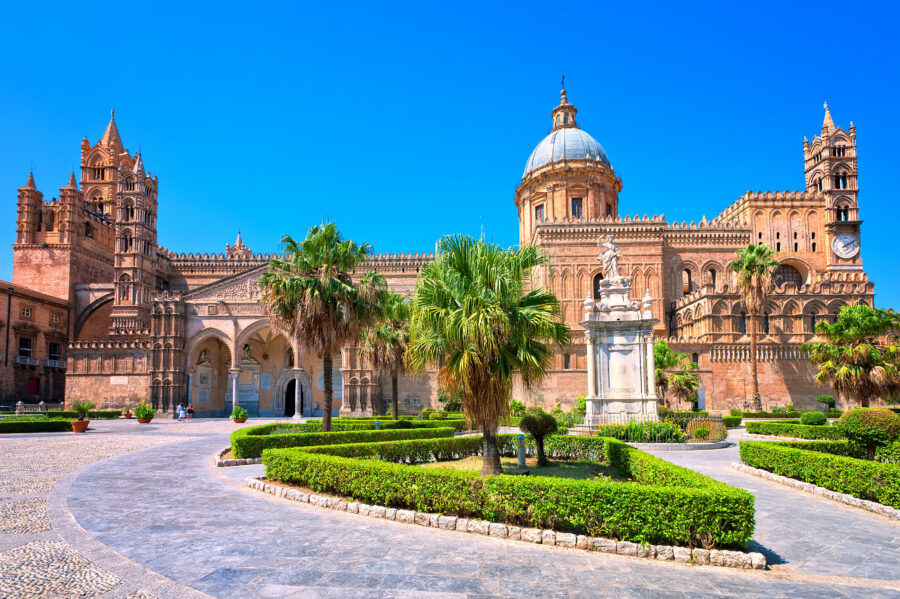
The Norman Palace is Palermo’s crown jewel, featuring stunning Byzantine mosaics and architectural grandeur. This royal residence dates back to the 9th century and serves as Sicily’s parliament building today.
The city’s open-air markets burst with energy. The Ballaro and Vucciria markets let visitors taste local street food while soaking in authentic Sicilian culture.
Beach lovers flock to Mondello, a pristine stretch of white sand just 20 minutes from the city center. The clear waters make it perfect for swimming and booking beach activities.
Teatro Massimo draws music fans with world-class opera performances. As Italy’s largest opera house, it hosts spectacular classical music concerts throughout the year.
Naples’ Enticing Activities
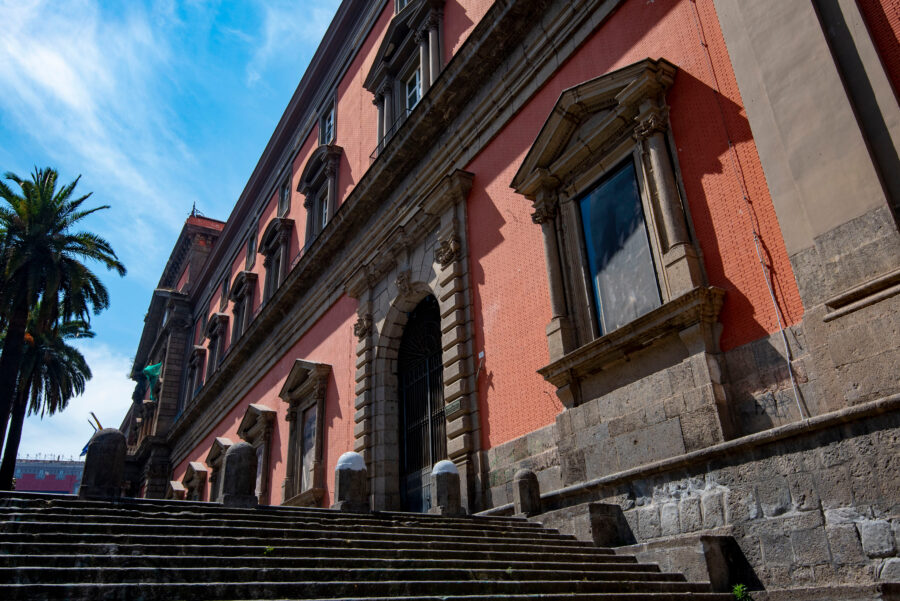
The ancient ruins of Pompeii sit just outside Naples, offering an unmatched glimpse into Roman life. Visitors can walk through preserved streets and buildings frozen in time by Mount Vesuvius’s eruption.
Naples National Archaeological Museum houses incredible artifacts from Pompeii and Herculaneum. The collection includes stunning mosaics, sculptures, and everyday items from ancient Roman life.
The city comes alive at night with busy bars and clubs around the Spanish Quarter. Local bands play traditional Neapolitan music in cozy venues.
Book guided tours to explore the underground tunnels of Napoli Sotterranea, which reveal layers of the city’s past civilizations.
The nearby Bay of Naples provides spots for snorkeling and swimming during summer. Small boats take visitors to hidden coves along the coastline.
Shopping and Markets
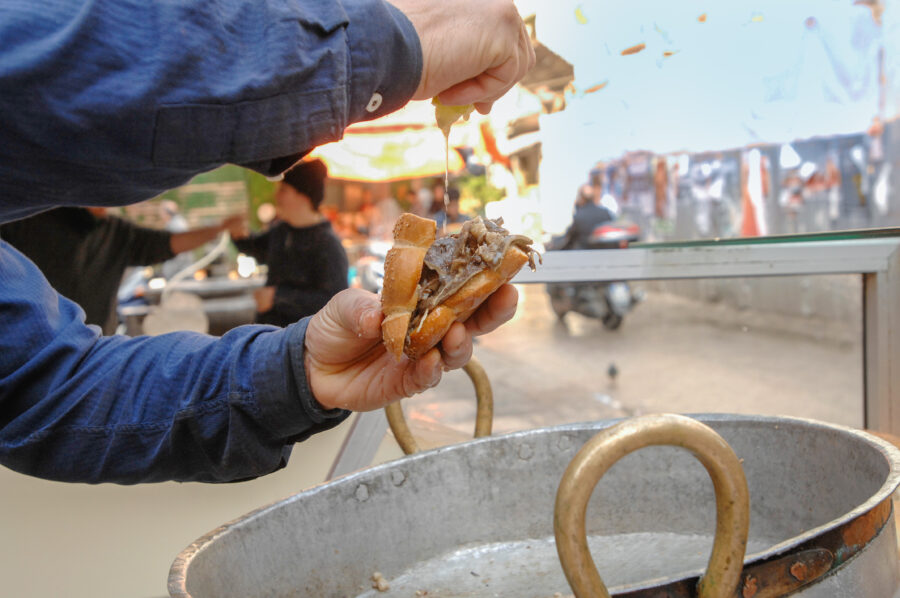
Both cities offer unique shopping experiences with vibrant markets and modern retail options. Naples tends to be pricier, while Palermo gives shoppers more budget-friendly choices.
Shopping in Palermo
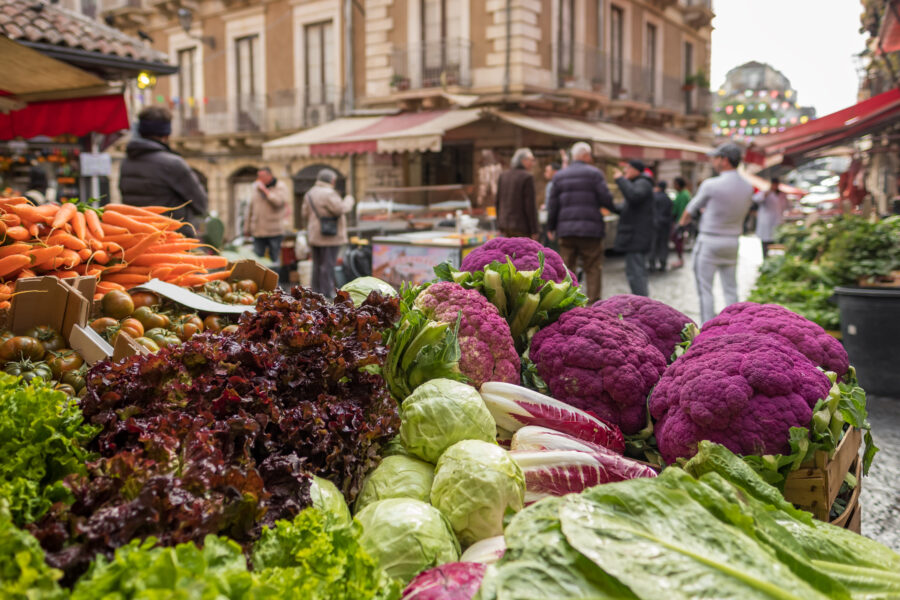
The Vucciria Market stands out as Palermo’s most famous shopping spot. Its narrow streets burst with local crafts, fresh produce, and traditional Sicilian goods.
Ballaro Market has hundreds of vendors selling everything from handmade ceramics to vintage clothing. The prices are much lower here than in Naples.
Via Libertà is Palermo’s main shopping street. Its shops feature Italian fashion boutiques and local artisan shops selling handmade leather goods and jewelry.
Naples’ Retail Experience
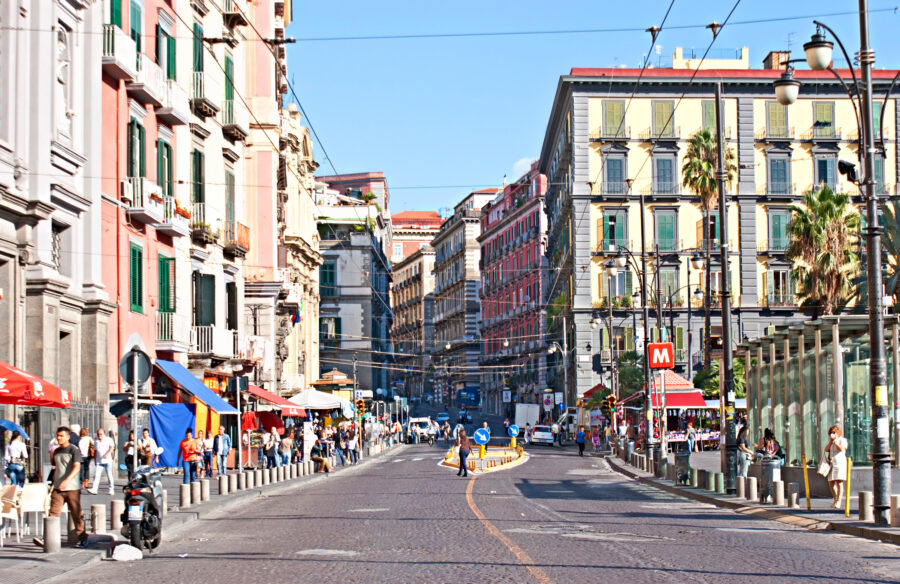
Via Toledo and Via Chiaia form the heart of Naples’ shopping district. These streets feature a mix of high-end Italian fashion brands and international retailers.
The Mercato di Porta Nolana offers a more authentic experience. Local vendors sell clothes, accessories, and crafts at reasonable prices. The market gets busy early, so visit before noon for the best selection.
Naples has several antique shops around the Quartieri Spagnoli area. These small stores stock unique items like vintage maps, old books, and traditional Neapolitan masks.
Cost and Budget Tips
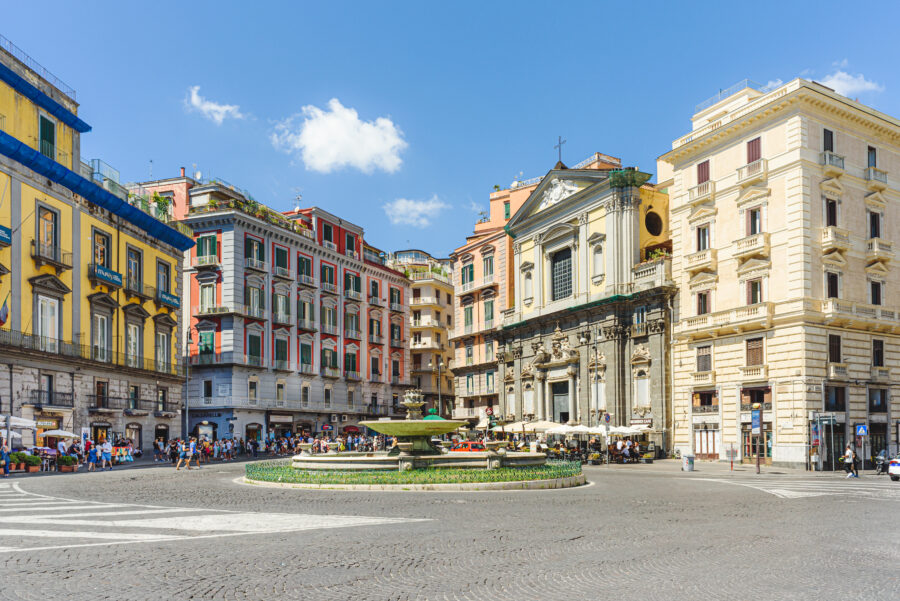
Naples and Palermo offer different price points for travelers, with Palermo generally being more affordable for dining, accommodations, and daily expenses. Living costs in Palermo run about 16% lower than in Naples, giving budget-conscious travelers more flexibility.
Affordable Palermo
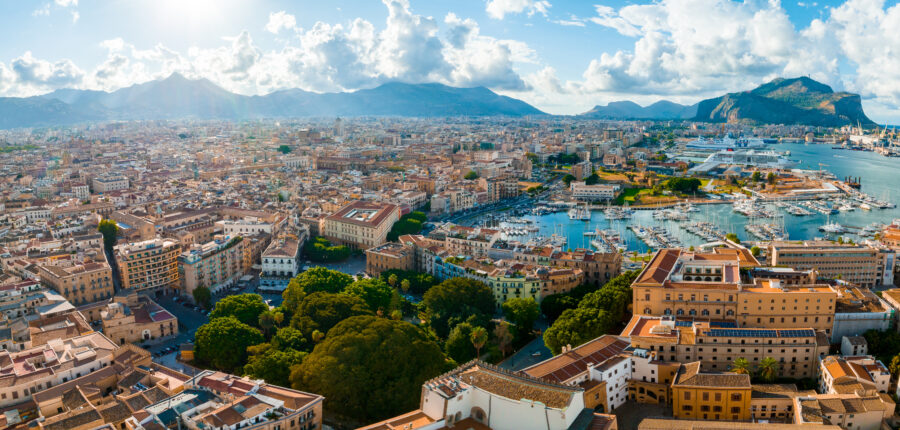
The Sicilian capital shines for budget travelers. Street food costs just €3-5 per item at spots like Ballarò Market. Simple restaurants serve filling pasta dishes for €8-12.
Local buses charge €1.40 per ride, making city exploration cheap. Many churches and historic sites offer free entry on certain days.
Budget hotels in central neighborhoods like La Kalsa start around €50-70 per night. Hostels cost €15-25 for dorm beds.
Shopping at neighborhood markets saves money on groceries. Fresh produce often costs less than in supermarkets.
Naples on a Budget

Naples requires thoughtful planning to keep costs reasonable. Pizza margherita at authentic pizzerias costs €4-7, while pasta dishes run €10-15 at casual spots.
Public transport passes cost €1.50 per ride or €4.50 for daily tickets. Walking tours through the historic center are often free.
Mid-range hotels near the train station average €80-100 nightly. For lower rates, consider staying in nearby towns like San Giorgio.
The best flight deals appear 3-4 months before travel. Book accommodations early during peak season to avoid premium prices.
Street markets like Pignasecca offer fresh food at local prices. Many museums offer free entry on the first Sunday of each month.
Festivals and Events
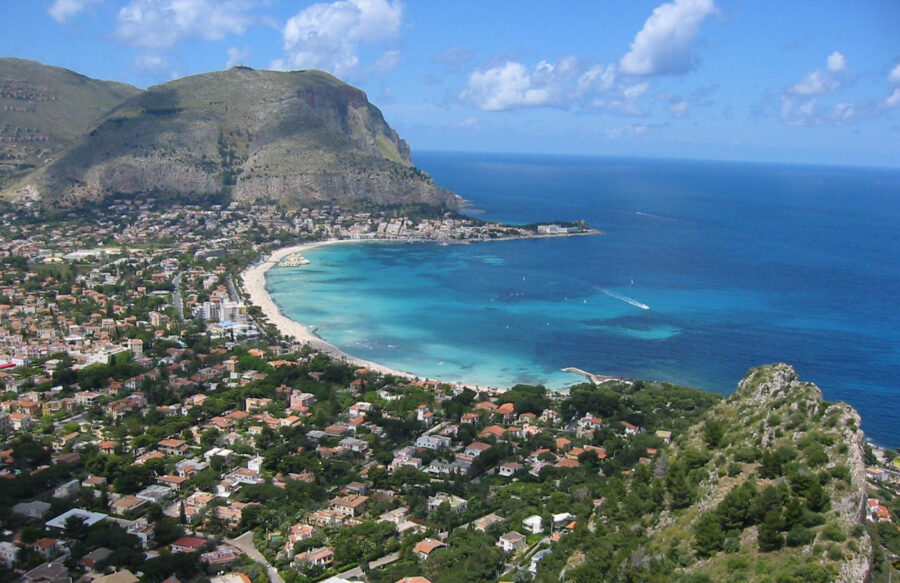
Palermo and Naples light up with spectacular festivals throughout the year, celebrating their rich traditions, religious heritage, and local culture. These events give visitors a chance to experience authentic Italian celebrations up close.
Palermo’s Vibrant Festivities
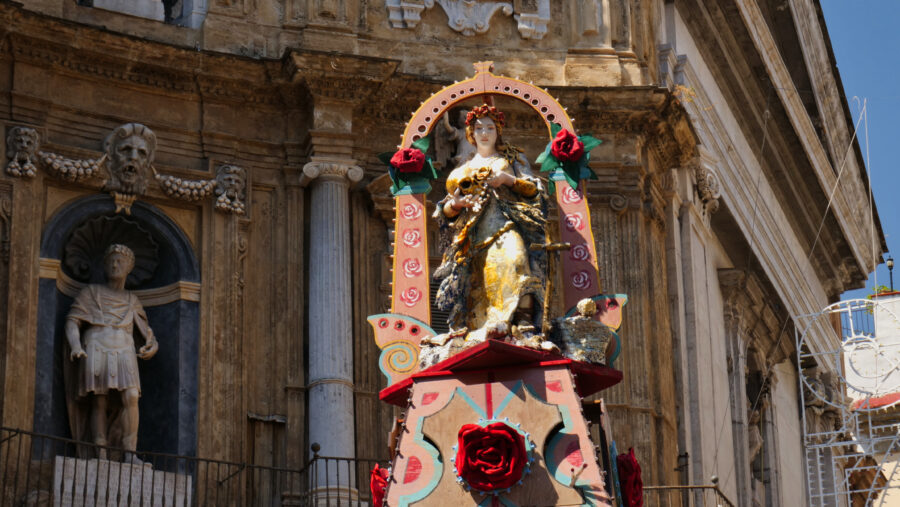
Each July, colorful parades, music, and food stalls take over Palermo’s streets for the Santa Rosalia Festival. A grand procession honors the city’s patron saint in a massive silver chariot that carries her relics through historic neighborhoods.
Caltagirone’s ceramic staircase transforms into a stunning light display during the Festival of Light in July and August. Thousands of lanterns create intricate patterns across the 142-step staircase, drawing visitors across Italy.
Palermo’s markets also host street food festivals, where you can sample local specialties like arancini and panelle. The biggest food celebrations happen in spring and fall, when the weather is mild.
Naples’ Annual Celebrations
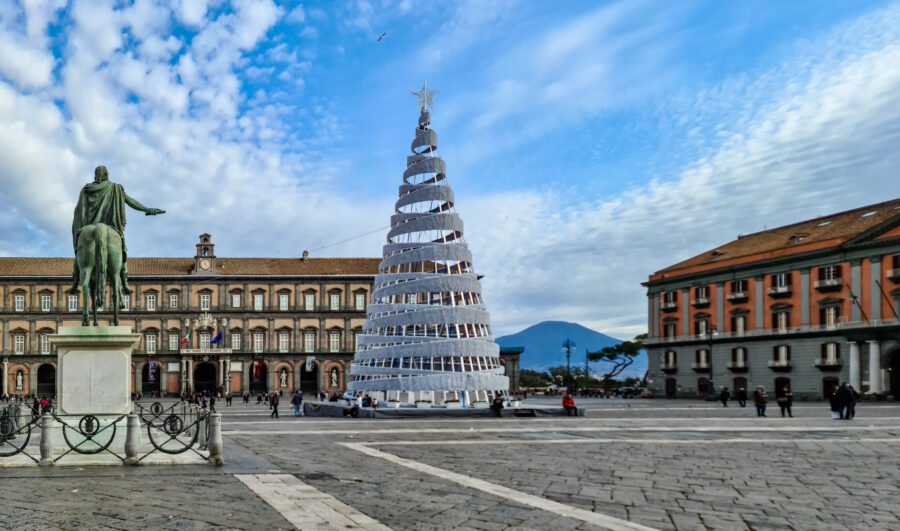
Naples hosts one of Italy’s most spirited Christmas markets from late November to early January. San Gregorio Armeno Street is filled with handcrafted nativity scenes and festive decorations. Meanwhile, local artisans display their traditional figurines in tiny workshops.
Festa di San Gennaro brings Naples together three times yearly, with the main celebration in September. The city anxiously awaits its patron saint’s blood liquefaction – a cherished miracle that draws enormous crowds.
Each June, Pizza Village takes over the seafront promenade. The world’s best pizzaiolos serve authentic Neapolitan pizza, while music and entertainment keep the party going late into the night.
See Related: Florence vs Naples: Which Italian Gem Should You Visit?
Frequently Asked Questions

Naples and Palermo each offer distinct travel experiences shaped by their rich histories, unique cultures, and local traditions. The cities stand apart through their architectural styles, culinary scenes, and atmosphere.
What are the notable differences between visiting Palermo and Naples?
Naples greets visitors with its lively streets and world-class museums. Its bustling markets and authentic street food scene show the city’s energy.
On the other hand, Palermo features grand boulevards and impressive architecture that reflects its multicultural past. The city feels more spacious and less hectic than Naples.
The weather plays a significant role in both cities. Naples is best visited in spring or fall, while Palermo’s mild Mediterranean climate makes it pleasant year-round.
How do travel experiences contrast between Palermo and the Amalfi Coast?
The Amalfi Coast offers scenic coastal views and upscale resorts. Meanwhile, Palermo provides a more urban experience with its historic squares and markets.
Palermo’s beaches are less crowded than the Amalfi Coast’s popular spots. The city beaches give travelers a local feel rather than a tourist-focused experience.
Can you highlight the unique cultural aspects of Palermo compared to other Italian cities?
Palermo’s architecture shows influences from Arab, Norman, and Byzantine cultures, creating a unique skyline in Italy.
The street markets like Ballarò and Vucciria showcase Palermo’s distinct character. Vendors sell local specialties and traditional crafts specific to Sicily.
What transportation options are available for traveling from Palermo to Naples?
Flights connect the two cities with quick 1-hour journeys. Several airlines offer daily services between Palermo and Naples airports.
Ferry services run between the cities, though trips take longer than flying. The journey offers beautiful Mediterranean views along the way.
What factors should tourists consider when choosing between Naples and Palermo?
Budget matters differ between the cities. Naples tends to have more tourist-focused pricing, while Palermo often offers better value for accommodations and food.
Walking plays a big part in exploring both cities. Naples has steep hills and narrow streets, while Palermo’s layout makes it easier to navigate on foot.
The Capuchin Catacombs provide a fascinating look into local history. These underground passages house a unique collection of mummified remains.
The Teatro Massimo opens its doors for behind-the-scenes tours. Visitors can explore Italy’s largest opera house when shows aren’t running.
Local cooking classes teach traditional Sicilian recipes. Students learn to make authentic dishes using ingredients from nearby markets.
